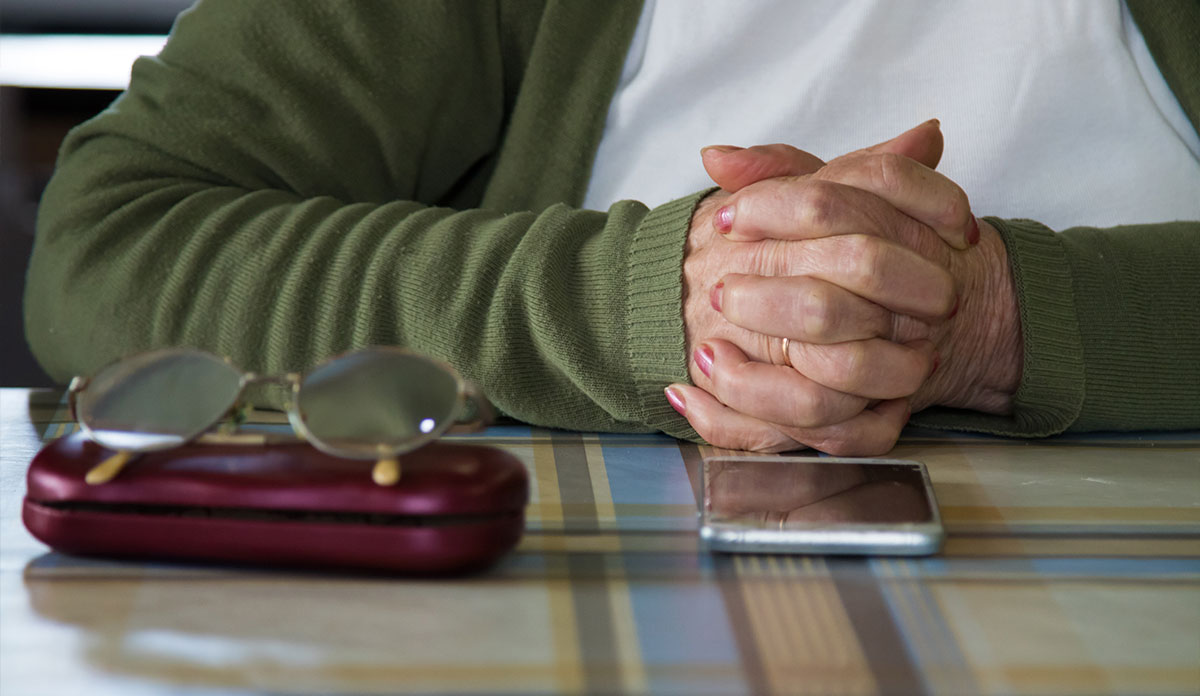Early in the pandemic, we reviewed past scientific studies on loneliness among elderly populations and drew examples from the literature to glean ways that technology could help this population in the current Covid-19 pandemic. We recently combined our findings from this research with our own observations from working with older adults in a detailed review published in the journal Working with Older People. Here are some of our key findings.
First, technology can involve a steep learning curve and can be too expensive or difficult for some people. It is only helpful when it is intuitive, affordable, and usable by the target population. Efforts to reduce loneliness should consider comfort with technology, financial resources, and disabilities such as vision/hearing impairment or poor motor skills. Elders should also be aware of potential dangers, such as internet scams, and ways to protect their safety while using apps that involve interaction with strangers.
Second, social and emotional loneliness need to be addressed with different technological approaches. Social loneliness is associated with a lack of interaction with family and friends, which can cause depression and other negative health effects. Emotional loneliness is similar but has more to do with fear, helplessness, and perception of threat, particularly in the context of uncertainty.
Social loneliness is associated with a lack of interaction with family and friends. … Emotional loneliness is similar but has more to do with fear, helplessness, and perception of threat.
Addressing Social Loneliness: Building Community
Simple phone conversations can ease loneliness. Video calls offer the added benefit of being able to see faces of friends and family and non-verbal cues. Social activities (such as playing cards or games online) or virtual exercise classes offer social interaction, mental stimulation, and fun—and may disrupt an otherwise sedentary lifestyle.
Other ideas include:
- Religious service live streams
- WhatsApp, for group messaging
- Social media: Twitter, Facebook, Instagram, Clubhouse (an up-and-coming audio-only social media app offering social conversations and educational talks)
- Pinterest, particularly for people who like crafts and other creative activities
- Community or neighborhood mailing lists to foster discussion, as well as to ask for and offer help
Addressing Emotional Loneliness: Easing Fear and Anxiety
When information about the virus and illness changes over time and seems to come from all directions, feelings of fear and helplessness can increase. Headspace and other meditation apps can help anxious individuals calm themselves. Telehealth—including appointments with psychiatrists and therapists—brings doctors to their patients.
Authoritative information about the virus and pandemic response from reputable medical organizations can help reduce uncertainty and confusion. Even as vaccines serve as a light at the end of the tunnel, the chaos and uncertainty regarding immunization access and efficacy present significant psychological barriers.
All Hands on Deck
Whether you are a health care worker, government official, concerned family member, or friendly neighbor, there are things you can do to assist lonely elders in the midst of a pandemic.
Family and friends can help identify useful tech options and assist with procuring devices, installing apps, and instruction on how to use them. Even something as simple as creating a shortcut on a desktop or cell phone can help make technology more usable. And setting up regular phone or video calls can ease loneliness and recreate a sense of routine.
Nursing homes, assisted living facilities, and other care providers can play a key role in getting the right tools and training to elders. Virtual social activities can replace those formerly held in person, and staff could help residents schedule regular calls with friends and family.
Insurance companies and public health organizations should consider incorporating technological equipment and programs into their services for isolated elders, particularly those with low socioeconomic status. Given the detrimental health impact of loneliness, reducing its impact may well cover any extra costs associated with providing, for example, one-touch tablets or intuitive apps designed for people with poor vision or motor control.
Creative approaches to problems on a micro to macro level will help us all get through this difficult time. Everyone can play a role.
Photo via Getty Images















